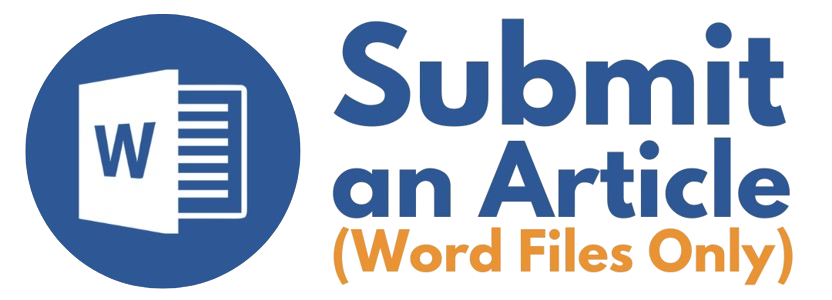ENGLISH FOR BUSINESS AND PROFESSIONAL COMMUNICATION: A SYNTACTIC AMBIGUITY ANALYSIS OF A STUDY PROGRAM’S NAME
(1) Politeknik Tonggak Equator Pontianak, Indonesia
(*) Corresponding Author
Abstract
This qualitative descriptive research aims to explore the different meanings that can be derived from the name of a study program, i.e., English for Business and Professional Communication, using a syntactic approach. The syntactic approach employed was the X-bar theory rules to analyze the possibilities of the structural meaning. The results show three possible structural interpretations of the program’s name: (i) an English language program with two specific objectives, namely business and professional communication, (ii) a program with two specializations, namely English language for business purposes and professional communication, and (iii) an English language program with a specific purpose in the field of communication, which is divided into two sub-fields, namely business communication and professional communication. Thus, the English for Business and Professional Communication study program name is an ambiguous construction with three possible structural readings.
Keywords
Full Text:
PDFReferences
Aitchison, J. (2010). Aitchison’s Linguistics (3rd ed.). Teach Yourself.
Al-Sulaimaan, D. M. M. D., & Khoshaba, L. M. (2018). Context as a Basis for Understanding Pragmatic Ambiguity with Reference to Arabic. International Journal of English Literature and Social Sciences, 3(5), 768–775. https://doi.org/10.22161/ijels.3.5.12
Almahameed, Y. S. (2020). Resolving Lexical and Structural Ambiguity by Jordanian Learners of English. Journal of Critical Review, 7(8), 2565–2573. https://www.researchgate.net/publication/343268503%0AJOURNAL
Anderson, C. (2018). Essentials of Linguistics. In McMaster University Hamilton, Ontario. McMaster University. http://solr.bccampus.ca:8001/bcc/file/f934dfef-66b0-4533-8bb4-7daaf8e94900/1/Essentials-of-Linguistics %281%29.html#part-chapter-11
Bucaria, C. (2004). Lexical and syntactic ambiguity as a source of humor: The case of newspaper headlines. Humor, 17(3), 279–309. https://doi.org/10.1515/humr.2004.013
Burton-Roberts, N. (2022). Analysing Sentences: An Introduction to English Syntax (5th ed.). Routledge. https://doi.org/10.4324/9781003118916
Charina, I. N. (2017). Lexical and Syntactic Ambiguity in Humor. International Journal of Humanity Studies (IJHS), 1(1), 120–131. https://doi.org/https://doi.org/10.24071/ijhs.2017.010113
Chomsky, N. (2002). On Nature and Language (A. Belletti & L. Rizzi (eds.)). Cambridge University Press.
Croker, R. A. (2009). An Introduction to Qualitative Research. In J. Heigham & R. A. Croker (Eds.), Qualitative Research in Applied Linguistics: A Practical Introduction (pp. 3–24). Palgrave Macmillan.
Demir, C. (2020). Lexical and structural ambiguities in student writing: An assessment and evaluation of results. African Educational Research Journal, 8(3), 100–108. https://doi.org/10.30918/AERJ.8S3.20.077
Hasebe, Y. (2022). RSyntaxTree: Syntax tree generator made with Ruby. The MIT License. https://yohasebe.com/rsyntaxtree/
Kemenristekdikti. (2017). Nama Program Studi pada Perguruan Tinggi. Menteri Riset, Teknologi, dan Pendidikan Tinggi Republik Indonesia.
Key, A. (2018). Language between God and the Poets: Maʿnā in the Eleventh Century. University of California Press. https://lccn.loc.gov/2018009383
Khawalda, M. I., & Al-saidat, E. M. (2012). Structural Ambiguity Interpretation: A Case Study of Arab Learners of English. Global Journal of Human Social Science, 12(6), 0–6.
Kurniasari, M. D. (2017). Tolerating Structural Ambiguity in Grammar Learning. International Journal of Indonesian Education and Teaching, 1(1), 85–94. https://doi.org/https://doi.org/10.24071/ijiet.v1i1.330 Teaching
Leech, G., Hundt, M., Mair, C., & Smith, N. (2009). Change in Contemporary English: A Grammatical Study. Cambridge University Press.
Mahendra, I. G., Maharani, P. D., & Karya, I. W. S. (2022). A structural ambiguity analysis in sentences found in the skeleton key novel. Journal of Language and Applied Linguistics, 3(1), 1–9. https://doi.org/https://dx.doi.org/10.22334/traverse.v3i1
Oaks, D. D. (1994). Creating structural ambiguities in humor: Getting english grammar to cooperate. Humor, 7(4), 377–402. https://doi.org/10.1515/humr.1994.7.4.377
Ortega-Martín, M., García-Sierra, Ó., Ardoiz, A., Álvarez, J., Armenteros, J. C., & Alonso, A. (2023). Linguistic ambiguity analysis in ChatGPT. http://arxiv.org/abs/2302.06426
Puspitasari, J., & Beratha, N. L. S. (2019). Lexical and Structural Ambiguity Found in Articles in The Jakarta Post Daily Newspaper. Jurnal Humanis, 23(1), 19–24. https://doi.org/10.24843/JH.2019.v23.i01.p04
Radford, A. (2009a). An Introduction to English Sentence Structure. Cambridge University Press.
Radford, A. (2009b). Analysing English Sentences: A Minimalist Approach. Cambridge University Press. www.cambridge.org/9780521516976
Yule, G. (2010). The Study of Language (4th ed.). Cambridge University Press. www.cambridge.org/9780521765275%0A©
Zhang, Y., & Ding, H. (2020). The Effect of Ambiguity Awareness on Second Language Learners’ Prosodic Disambiguation. Frontiers in Psychology, 11(1), 1–11. https://doi.org/10.3389/fpsyg.2020.573520
Zimmermann, T. E., & Sternefeld, W. (2013). Introduction to Semantics: An Essential Guide to the Composition of Meaning. De Gruyter Mouton.
DOI: https://doi.org/10.24071/ijhs.v7i1.6262
Refbacks
- There are currently no refbacks.
Copyright (c) 2023 Yosafat Barona Valentino

This work is licensed under a Creative Commons Attribution-ShareAlike 4.0 International License.
Indexed and abstracted in:
IJHS Sinta 3 Certificate (S3 = Level 3)
International Journal of Humanity Studies (IJHS) has been nationally accredited Sinta 3 by the Ministry of Education, Culture, Research and Technology of the Republic of Indonesia based on the decree No. Surat Keputusan 158/E/KPT/2021. Validity for 5 years: Vol 4 No 1, 2020 till Vol 8 No 2, 2024

This work is licensed under CC BY-SA.
Creative Commons Attribution-ShareAlike 4.0 International License.
p-ISSN: 2597-470X (since 31 August 2017); e-ISSN: 2597-4718 (since 31 August 2017)
Notice: The opinions expressed in this publication are those of the authors. They do not purport to reflect the opinions or views of the editorial team or publishers.
International Journal of Humanity Studies (IJHS) is a scientific journal in English published twice a year, namely in September and March, by Sanata Dharma University, Yogyakarta, Indonesia.



















